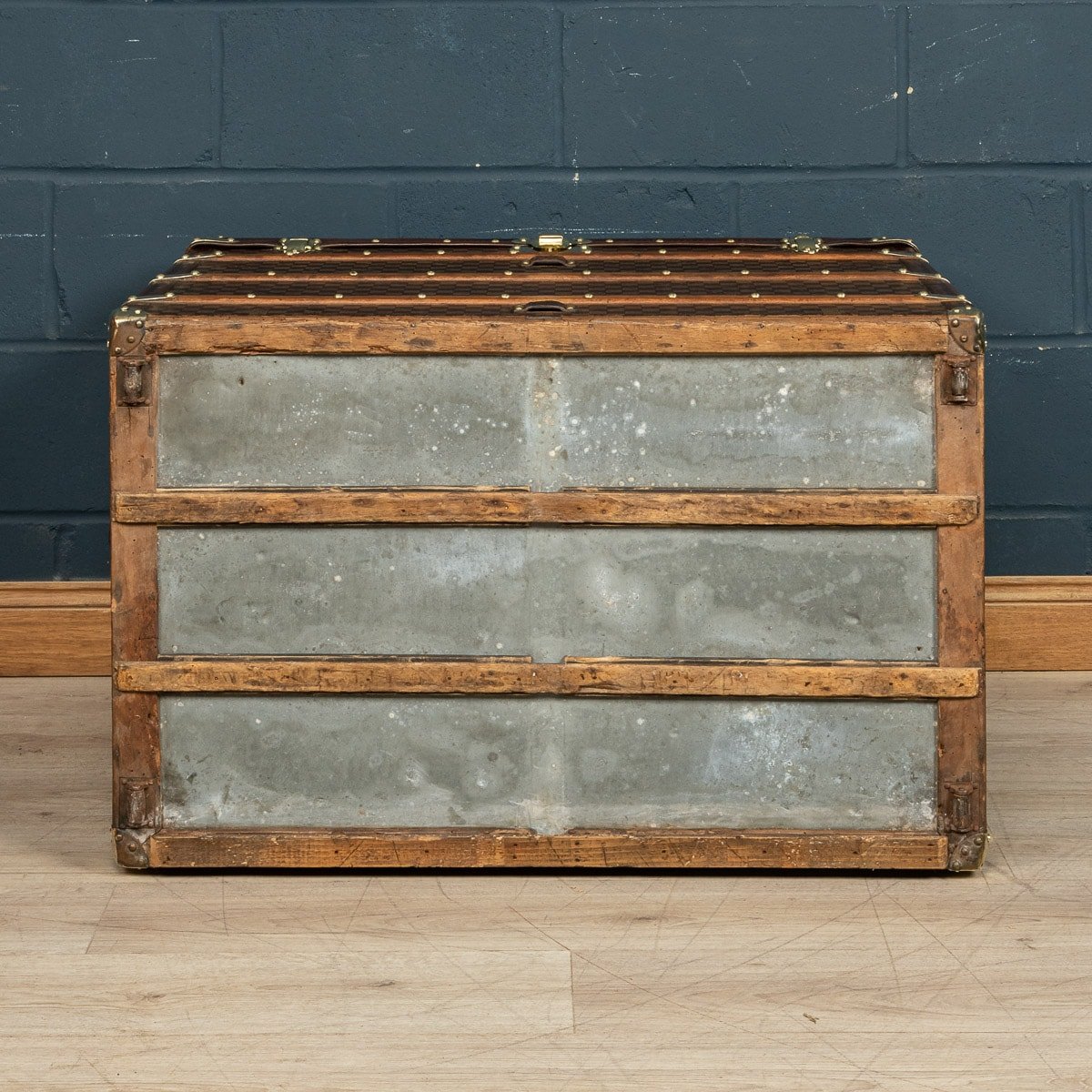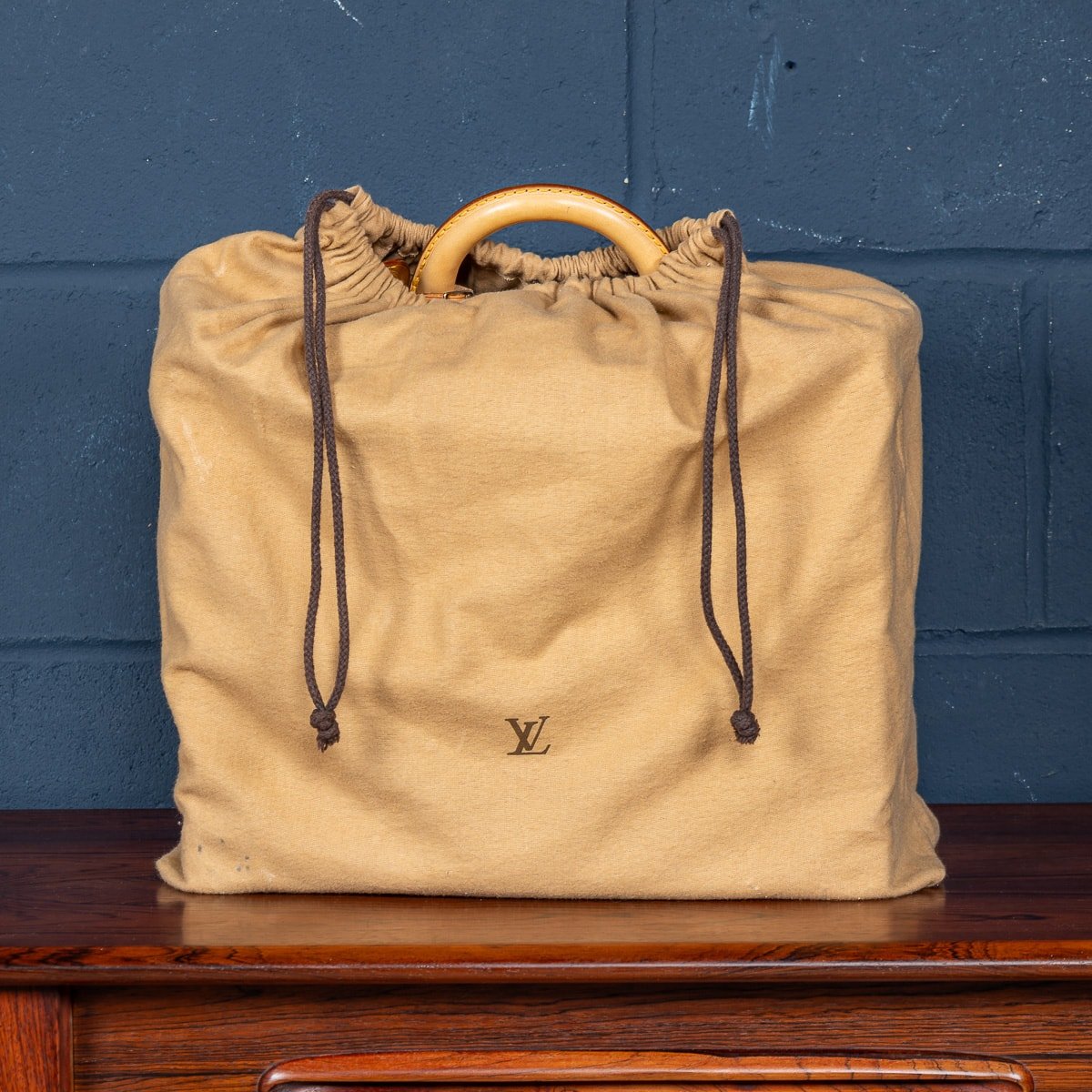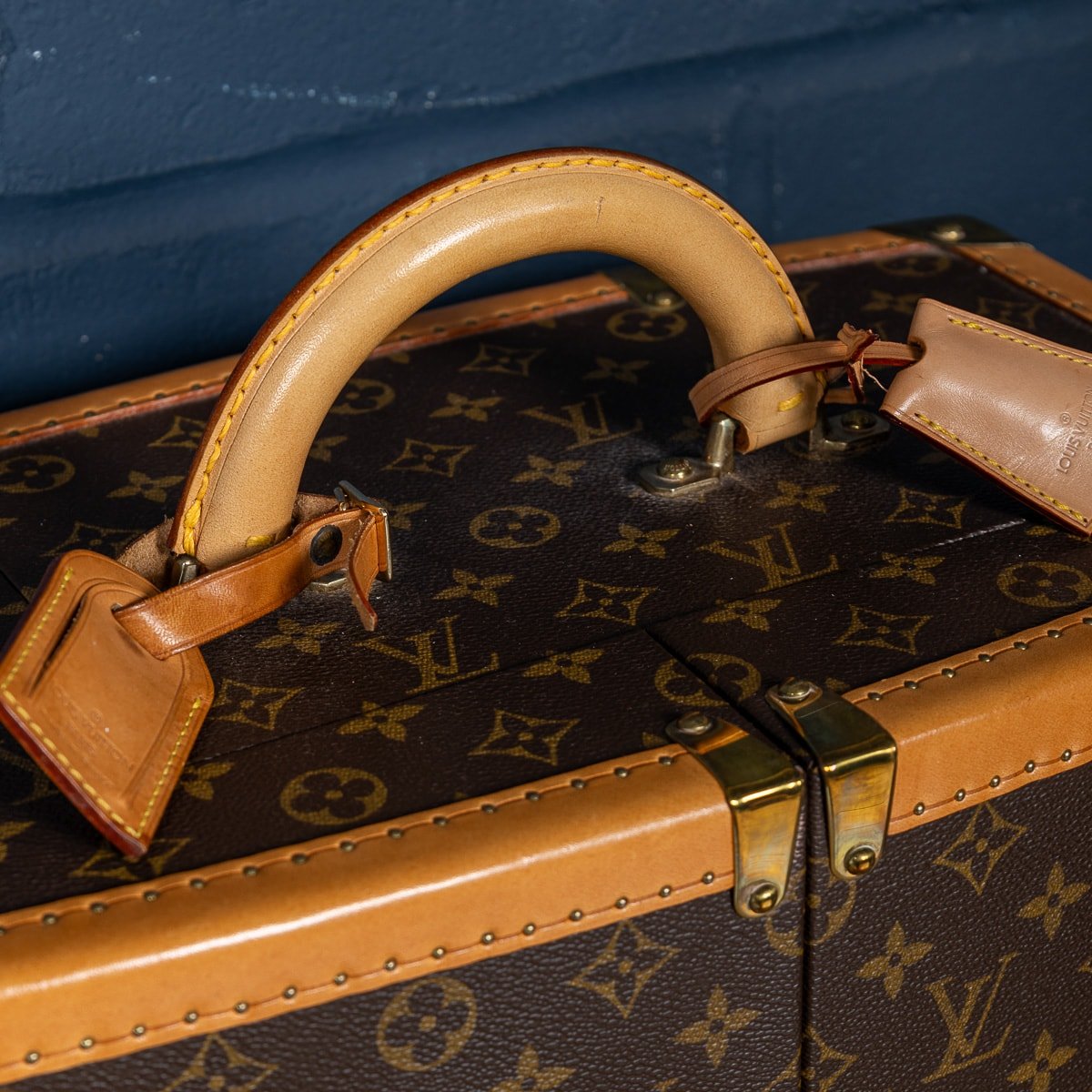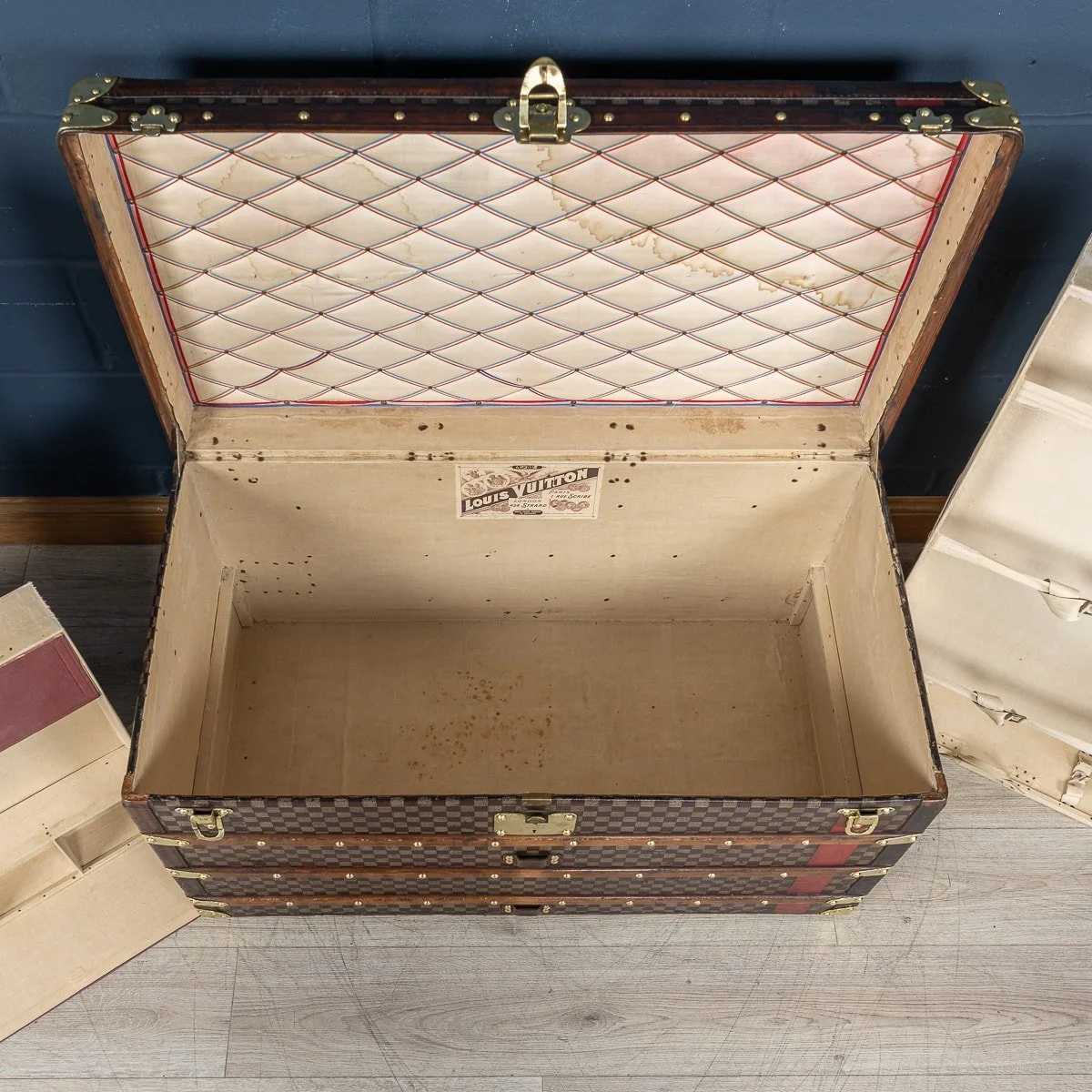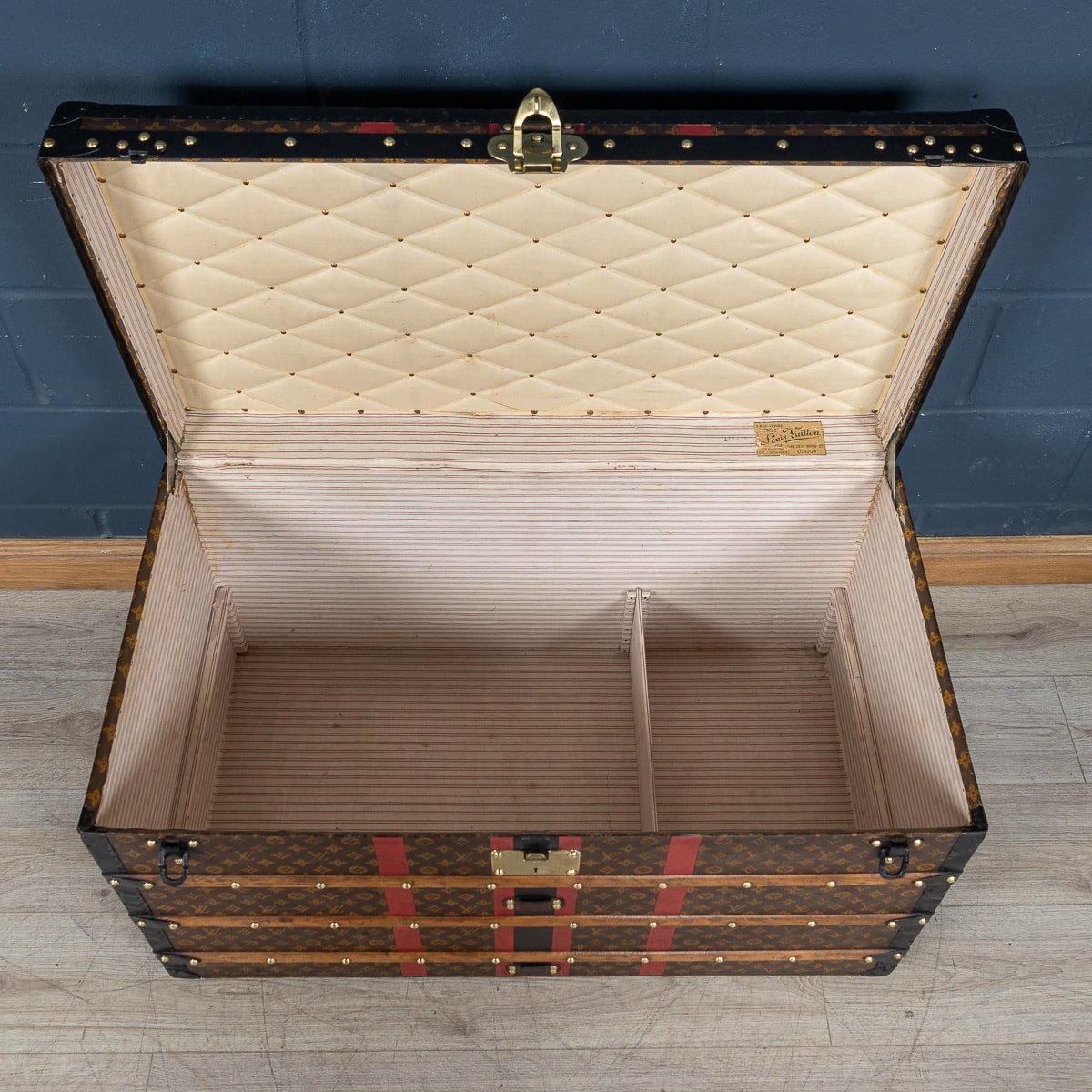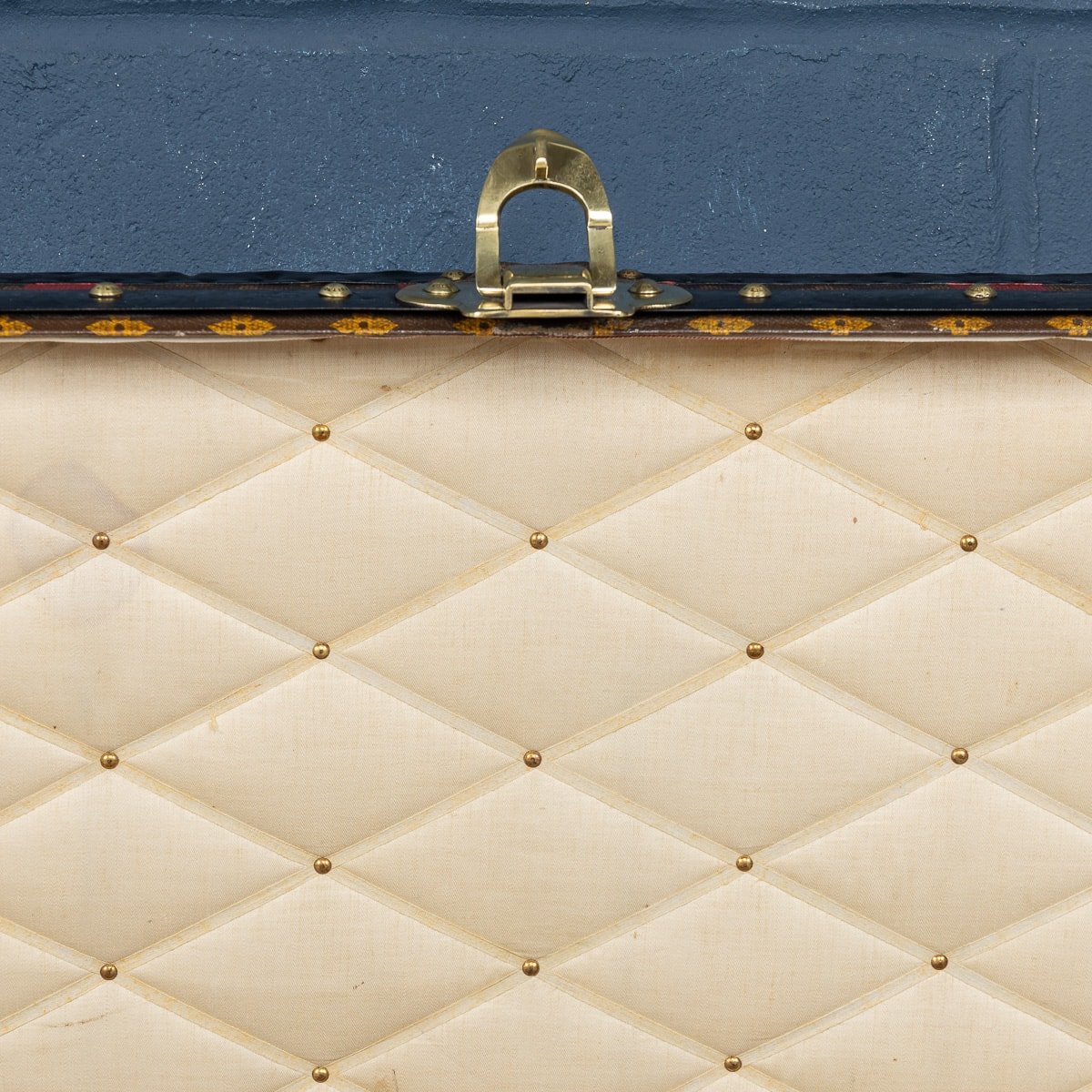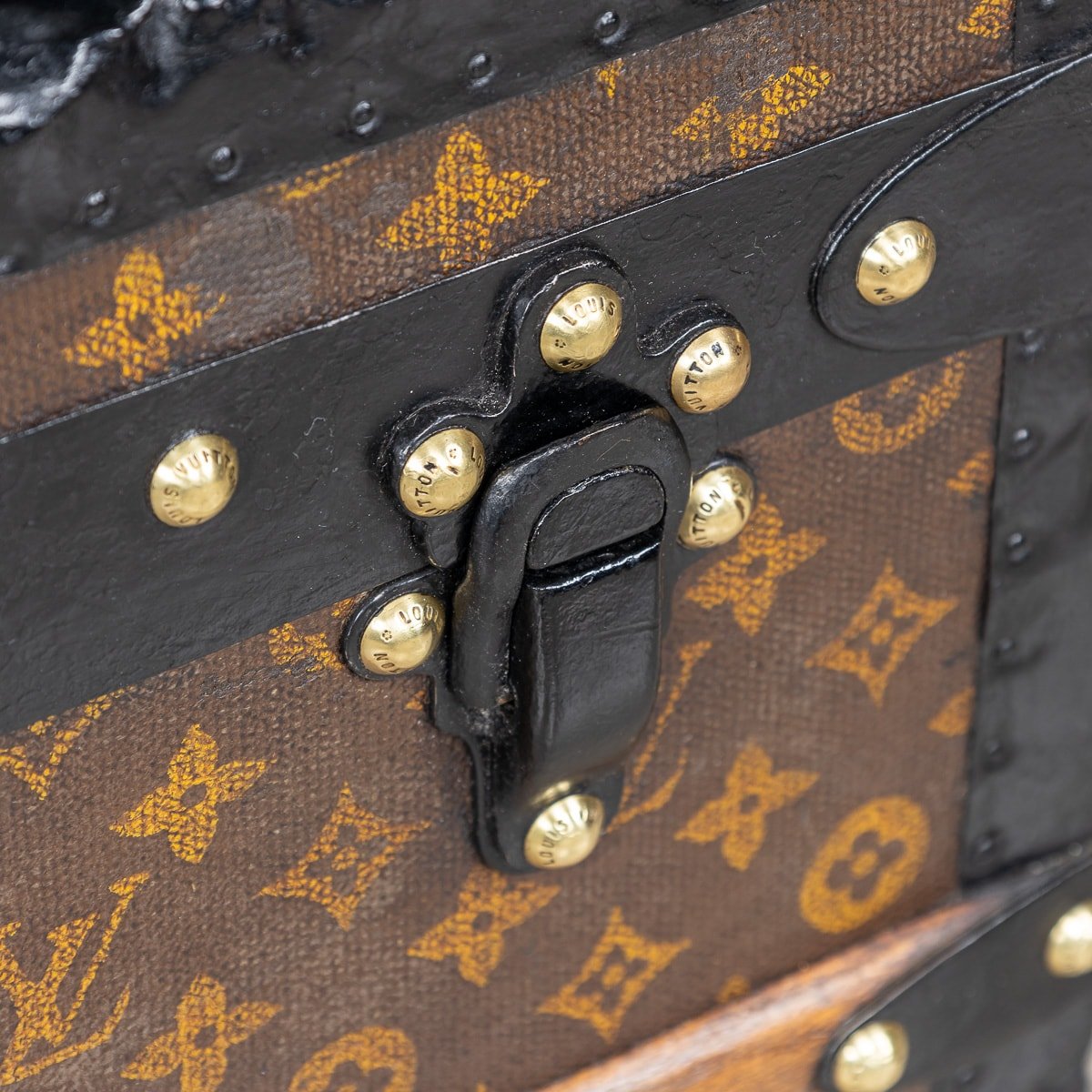ANTIQUE 20thC LOUIS VUITTON TRUNK IN DAMIER CANVAS, PARIS c.1900
One of the rarest Louis Vuitton trunks to be offered, this trunk is covered in the world famous damier (checkerboard) canvas. Dating to around 1900, it is a perfect example of such trunks. With its leather trim, brass studs, fittings and locks it still shows the same elegance as it did well over 100 years ago and is a testament to the durability of the best trunk maker in the world. Today it makes for a wonderful piece of interior design, both decorative and useful. This particular example has very unusual proportions, measuring 70cm in height but a narrower 90cm in width. Usually trunks with a height of 70cm have a width of 110cm, so quite possibly this trunk was a special order made for Mr or Mrs Waters. The lettering on both sides are original from the Louis Vuitton factory but we have been unable to find any history as to the identity of S.P. Waters.
Reference Number: B8895
DESCRIPTION
One of the rarest Louis Vuitton trunks to be offered, this trunk is covered in the world famous damier (checkerboard) canvas. Dating to around 1900, it is a perfect example of such trunks. With its leather trim, brass studs, fittings and locks it still shows the same elegance as it did well over 100 years ago and is a testament to the durability of the best trunk maker in the world. Today it makes for a wonderful piece of interior design, both decorative and useful. This particular example has very unusual proportions, measuring 70cm in height but a narrower 90cm in width. Usually trunks with a height of 70cm have a width of 110cm, so quite possibly this trunk was a special order made for Mr or Mrs Waters. The lettering on both sides are original from the Louis Vuitton factory but we have been unable to find any history as to the identity of S.P. Waters.
A brief history about Louis Vuitton trunks: Louis Vuitton was born in 1821 to a farmer and milliner and came from a long-established working-class family in eastern France. Vuitton grew up understanding the effects of perseverance and a strong work ethic from watching his family. At the age of 16, he made the decision to walk 292 miles from his hometown to Paris to try and make a new life for himself. When he arrived the city was in the midst of industrialization with current modes of transportation evolving quickly allowing for longer journeys. With this came the need for sturdy travel pieces. Vuitton was taken as an apprentice for a successful box maker and packer named Monsieur Marechal. He learned to craft durable containers and how to pack them properly – a well-respected profession at the time.In 1854, years after he had mastered his craft and became well respected for it, Vuitton ventured out on his own to open a shop on Rue Neuve des Capucines. It was here that he began to establish himself as a luggage maker. Then, in 1858, Vuitton designed the first Louis Vuitton steamer trunk. At the time trunks had rounded tops to allow for water to run off but this did not allow for convenient stowage. Vuitton introduced a flat, yet waterproof, trunk that was easily stackable. The first of his trunks were outfitted with a grey canvas referred to as Trianon – it wouldn’t be until several decades later that the signature monogram would be introduced. With a burgeoning business, Vuitton moved his family and workplace to Asniere, where he employed twenty workers to craft his trunks. By 1900 he would have 100 employees, and in 1914 the company would more than double in size. After years of success, Vuitton began to experiment with the design of his luggage by introducing a new striped canvas pattern (1876) and later the still well-known Damier print (1888). The hand-painted patterns were developed to prevent counterfeits. Even in the late 1800s, Louis Vuitton was enough of a status symbol to warrant counterfeiting. In 1886, his son George invented and patented an ingenious locking system that made it impossible to pick the lock of their trunks. This lock is still used today. 1892 would prove to be a time of mourning for the family as Louis Vuitton passed away at the age of 70. His son, Georges Vuitton, became the new head of the luxury house. Louis Vuitton’s passing would prompt his son to once again change the print of their luggage, and in 1896, to honour his father, the signature LV monogram was introduced and patterned with LVs, quatrefoils, and flowers. Under his direction success followed and the iconic monogram rose to fame among elite clientele.
We offer complimentary shipping to all our customers in Great Britain.
We are unable to provide a fixed shipping cost for this item to all other countries.
All international customers must request a shipping quote before purchasing as shipping costs can vary greatly depending on the destination country.
Please note that our interior pieces are located at our Interior Design Showroom in Buckinghamshire, if you wish to see the item in person, please contact us to arrange an appointment.
CONDITION
In Good Condition - wear consistent with age, some wear to the canvas but overall great condition (please see photographs).
SIZE
Width: 91cm
Height: 70cm
Depth: 59cm






